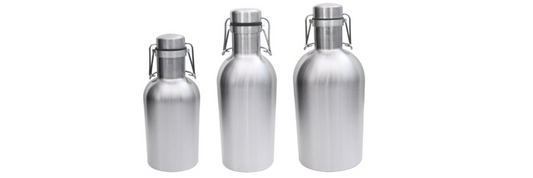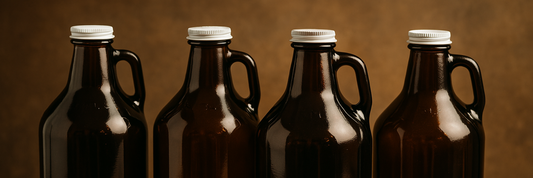Vacuum sealing, a widely employed food preservation technique, significantly enhances the shelf life of various food items. By eliminating oxygen, it effectively hinders the growth of microorganisms, thereby reducing spoilage. This study will delve into the key factors influencing vacuum sealed food shelf-life and present a comprehensive chart outlining expected durations under different storage conditions.
- Types of Vacuum Sealer Bags: Which Should You Choose?
- Vacuum Sealers: How to Extend Food Shelf Life and Preserve Freshness
- Guide to Choose the Right Vacuum Sealer Bags
Factors that Influence to Vacuum Sealed Food Shelf Life
Several factors contribute to the longevity of vacuum-sealed food. These include:
- Food Type and Composition:
- Moisture Content: Foods with higher moisture content are more susceptible to spoilage.
- pH Level: Foods with a lower pH (more acidic) are generally more resistant to microbial growth.
- Nutrient Content: Foods rich in nutrients, such as vitamins and minerals, can degrade over time, even when vacuum-sealed.
- Vacuum Quality:
- Oxygen Removal: The effectiveness of the vacuum sealer in removing oxygen from the packaging is crucial.
- Seal Integrity: A strong, leak-free seal is essential to prevent oxygen infiltration.
- Storage Conditions:
- Temperature: Lower temperatures slow down microbial activity.
- Humidity: High humidity can promote mold growth, even in vacuum-sealed packaging.
- Light Exposure: Exposure to light can accelerate the degradation of certain nutrients and pigments.
- Packaging Material:
- Barrier Properties: The material used for the packaging should be resistant to oxygen, moisture, and other environmental factors.
- Thickness: Thicker packaging can provide better protection against external influences.
- Pre-Treatment:
- Cleaning and Drying: Properly cleaning and drying food before vacuum sealing can help prevent microbial contamination.
- Blanching: Blanching certain vegetables can reduce enzyme activity and extend shelf life.
Overall, the shelf life of vacuum-sealed food is influenced by a variety of factors. These factors contribute to the differences in shelf life between food stored in a freezer, at room temperature, and in a refrigerator. Let's explore vacuum sealed food shelf life in each condition.

Vacuum Sealed Food Shelf-Life Chart
The shelf life of vacuum-sealed food varies significantly based on storage conditions. Freezers, refrigerators, and room temperature each have distinct effects on food longevity and quality.
How Long Does Vacuum Sealed Food Last in a Freezer?
- Red Meat (steaks, roasts): While vacuum-sealed red meats can last for up to 12 months in the freezer, it's recommended to consume them within 6 months for optimal flavor and quality.
- Ground Meat: Ground meat, even when vacuum-sealed, should be consumed within 3-4 months for best results.
- Poultry (whole, parts): Vacuum-sealed poultry can be stored in the freezer for up to 9-12 months. However, it's advisable to use it within this timeframe to ensure freshness and safety.
- Seafood (fresh): Fresh seafood, when vacuum-sealed, can be frozen for 3-6 months. However, the specific shelf life may vary depending on the type of seafood.
- Cooked Meats: Cooked meats, such as roasts, steaks, or poultry, can be stored in the freezer for 2-3 months.
- Fruits (whole, cut): Vacuum-sealed fruits, whether whole or cut, can be frozen for 6-12 months. However, the texture and flavor may change slightly after prolonged storage.
- Vegetables (whole, cut): Vacuum-sealed vegetables, both whole and cut, can be frozen for 6-12 months. The quality and taste may be affected by extended storage, especially for leafy greens.
- Bread: Bread can be frozen for 3-6 months when vacuum-sealed. However, it may become slightly stale after prolonged storage.
- Cooked Rice, Pasta: Cooked rice and pasta, when vacuum-sealed, can be frozen for 3-6 months. However, the texture may become slightly softer after thawing.
How Long Does Vacuum Sealed Food Last at Room Temperature?
- Red Meat (steaks, roasts): While vacuum-sealed red meats can be stored at room temperature for 2-3 days, it's highly recommended to refrigerate or freeze them for longer storage.
- Ground Meat: Ground meat should be consumed within 1 day of storage at room temperature, even when vacuum-sealed.
- Poultry (whole, parts): Poultry, even when vacuum-sealed, should not be stored at room temperature for more than 1 day.
- Seafood (fresh): Fresh seafood should be consumed immediately or stored in the refrigerator within 1 day of purchase, even when vacuum-sealed.
- Cooked Meats: Cooked meats can be stored at room temperature for 2-3 days when vacuum-sealed, but it's recommended to refrigerate them for longer shelf life.
- Fruits (whole, cut): Fruits, even when vacuum-sealed, should be stored in the refrigerator or consumed within 1-2 days at room temperature.
- Vegetables (whole, cut): Vegetables, even when vacuum-sealed, should be stored in the refrigerator or consumed within 1-2 days at room temperature.
- Bread: Vacuum-sealed bread can be stored at room temperature for 2-3 days, but it may become stale more quickly than when refrigerated.
- Cooked Rice, Pasta: Cooked rice and pasta, when vacuum-sealed, can be stored at room temperature for 2-3 days, but it's recommended to refrigerate them for longer shelf life.
How Long Does Vacuum Sealed Food Last in a Fridge?
- Red Meat (steaks, roasts): Vacuum-sealed red meats can be stored in the refrigerator for 1-2 weeks. However, for optimal flavor and quality, it's recommended to consume them within the first week.
- Ground Meat: Ground meat should be consumed within 1-2 days of storage in the refrigerator, even when vacuum-sealed.
- Poultry (whole, parts): Vacuum-sealed poultry can be stored in the refrigerator for 2-3 days.
- Seafood (fresh): Fresh seafood, even when vacuum-sealed, should be consumed within 1-2 days of storage in the refrigerator.
- Cooked Meats: Cooked meats can be stored in the refrigerator for 3-5 days when vacuum-sealed.
- Fruits (whole, cut): Vacuum-sealed fruits can be stored in the refrigerator for 1-2 weeks. However, the texture and flavor may change slightly after prolonged storage.
- Vegetables (whole, cut): Vacuum-sealed vegetables can be stored in the refrigerator for 1-2 weeks. However, the quality and taste may be affected by extended storage, especially for leafy greens.
- Bread: Vacuum-sealed bread can be stored in the refrigerator for 1-2 weeks. However, it may become slightly stale after prolonged storage.
- Cooked Rice, Pasta: Cooked rice and pasta, when vacuum-sealed, can be stored in the refrigerator for 3-5 days. However, the texture may become slightly softer after thawing.

Here is the summarizing table of vacuum sealed food shelf-life:
|
Food Type |
Freezer |
Refrigerator |
Room Temperature |
|
Red Meat (steaks, roasts) |
6-12 months |
1-2 weeks |
2-3 days |
|
Ground Meat |
3-4 months |
1-2 days |
1 day |
|
Poultry (whole, parts) |
9-12 months |
2-3 days |
1 day |
|
Seafood (fresh) |
3-6 months |
1-2 days |
1 day |
|
Cooked Meats |
2-3 months |
3-5 days |
2-3 days |
|
Fruits (whole, cut) |
6-12 months |
1-2 weeks |
1-2 days |
|
Vegetables (whole, cut) |
6-12 months |
1-2 weeks |
1-2 days |
|
Bread |
3-6 months |
1-2 weeks |
2-3 days |
|
Cooked Rice, Pasta |
3-6 months |
3-5 days |
2-3 days |
However, these are general guidelines. Actual shelf life can vary depending on factors such as food quality, vacuum seal integrity, and storage conditions.
Conclusion
Vacuum sealing significantly extends food shelf life by preventing microbial growth. However, factors like food type, storage conditions, and packaging material influence its effectiveness. By following proper guidelines, consumers can maximize the benefits of vacuum sealing and reduce food waste.









